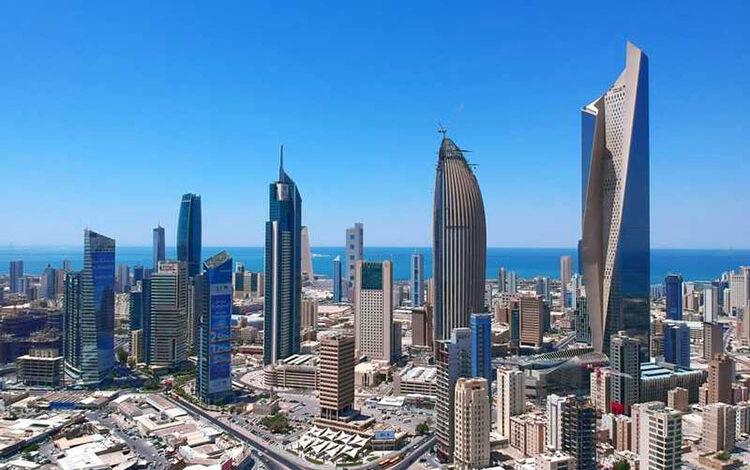World Bank predicts Kuwait’s economic recovery with 2.8% growth in 2024
The World Bank attributed Kuwait's robust economic performance to its expansive public financial policies, increasing oil production, and the successful full-scale operation of the Al-Zour refinery, which has a daily refining capacity of 615 thousand barrels.

• Kuwait’s oil production is projected to increase by 3.6 percent, alongside a 2.1 percent growth expected in the non-oil sector for this year, the World Bank said.
• The report suggests a recovery in economic growth in the Gulf, reaching 2.8 percent in 2024 and 4.7 percent in 2025
• Gulf countries’ commitment to diversifying their economies highlights their strategic approach to enhancing resilience and achieving sustainable development during a period of global economic fluctuations, the World Bank said.
The World Bank foresees Kuwait’s economic growth rebounding to 2.8% in 2024, crediting expansive public financial policies, rising oil production, and the successful full-scale operation of the Al-Zour refinery, boasting a daily refining capacity of 615 thousand barrels.
In its report, the World Bank expected oil production in Kuwait to grow by 3.6 percent. Additionally, it forecasted a 2.1 percent growth in the non-oil sector for this year.
The bank mentioned that relatively high interest rates could constrain domestic consumption, thus hindering Kuwait’s economic activity from reaching its full potential.
Moreover, continued political uncertainty may delay the implementation of new infrastructure projects and slow the pace of reform initiatives.
On the other hand, the World Bank report suggests a recovery in economic growth in the Gulf, reaching 2.8 percent in 2024 and 4.7 percent in 2025. This optimism stems from “regional prospects and the expected recovery in production.” This includes not only oil, especially since OPEC+ is gradually liberalizing production quotas in the second half of 2024, but also the strong momentum of the non-oil economy, which is expected to continue expanding at a robust pace in the medium term.
In this regard, the World Bank finds that Gulf countries’ commitment to diversifying their economies highlights their strategic approach to enhancing resilience and achieving sustainable development during a period of global economic fluctuations.
Saudi Arabia’s real GDP to grow by 2.5 percent
Regarding growth rates in the Gulf, the World Bank expects Saudi Arabia’s real GDP to grow by 2.5 percent in 2024, driven primarily by strong non-oil private sector activities.
Forecasts indicate a growth of 4.8 percent, with the end of the period of voluntary cuts in oil production in the second quarter of 2024, and an expected gradual increase in production during the second half of 2024.
UAE’s real GDP growth to accelerate to 3.9 percent in 2024
It is expected that the UAE’s real GDP growth will accelerate to 3.9 percent in 2024, driven by OPEC+’s announcement of a significant increase in oil production in the second half of 2024 and the recovery of global economic activity.
The growth rate of oil production is expected to reach 5.8 percent in 2024, provided that non-oil output remains strong and continues to support economic growth, increasing by 3.2 percent. This growth is driven by the strong performance of the tourism, real estate, construction, transportation, and manufacturing sectors.
Qatar’s economy to rise marginally
Regarding Qatar, the World Bank expects real GDP growth to rise marginally in 2024, but it will remain at a modest level of 2.1 percent, with the non-oil sector growing strongly at 2.4 percent, driven by the growth of the tourism sector.
Bahrain’s economic prospects
It was stated that Bahrain’s economic prospects depend on the future trends of the oil market and the acceleration of the pace of implementation of structural reforms. Estimates indicate that the growth rate will rise to 3.5 percent in 2024 with an increase in oil production, while the non-oil sector will remain the main engine of growth.
It was stated that Bahrain’s economic prospects depend on the future trends of the oil market and the acceleration of the pace of implementation of structural reforms.
Estimates indicate that the growth rate will rise to 3.5 percent in 2024 with an increase in oil production, while the non-oil sector will remain the main engine of growth.
Economic prospects for Oman remain positive
Additionally, the economic prospects for the Sultanate of Oman remain positive, with real growth expected to reach 1.5 percent in 2024, driven by increased gas production and efforts to diversify economic activity, especially through further improvements in the business environment.













